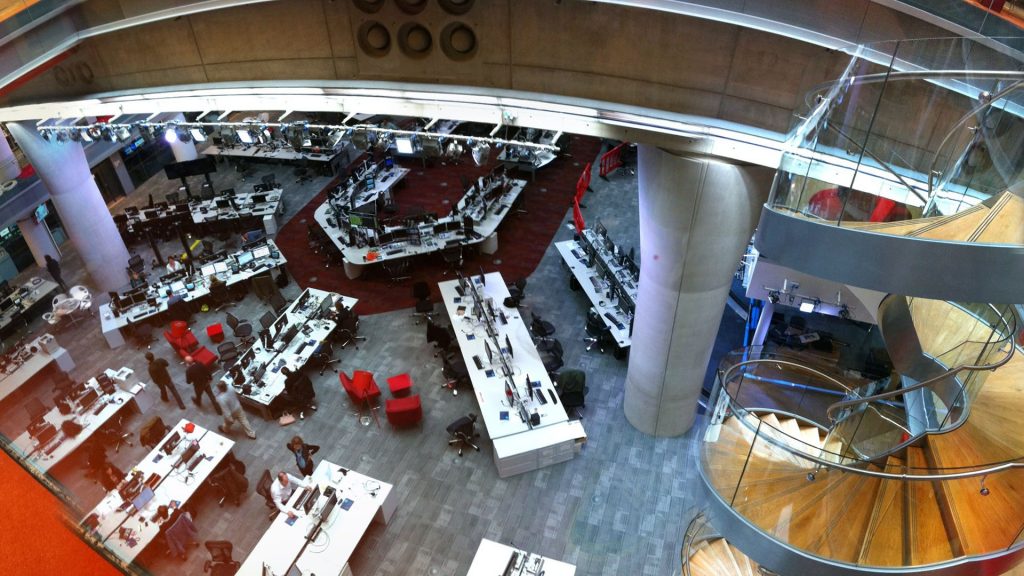Newsroom innovation often fails. Too often, it fails for the wrong reason. The new idea wasn’t a bad idea, it just never had a chance.
There is no better way to crush the spirit of innovation than to bring together a group of creative thinkers, turn them loose to brainstorm, allow them to become excited about implementing some of these innovations … and then require them to add new projects to their existing workloads.
There is no “free time” in the typical newsroom today. Adding new activities without eliminating other tasks is a surefire way to sabotage a promising innovation. It’s also intellectually dishonest. When push comes to shove, the new and extra lose out to the demands of the day and the urgency of the now.
That’s why smart managers start their innovation process by brainstorming a “Stop Doing” list before they generate a “Start Doing” list. They create capacity for innovation first.

Pain points are a great place to recoup time. Every workgroup in a newsroom – from producers to assignment desk to production crew – has these frustrations. Let them fill a whiteboard with the barriers that keep them from being more productive. Those are opportunities for process innovation. If the function is important, the innovation might involve doing the task differently. Is there a better, more efficient way? It’s also possible the function isn’t actually important anymore. It may just be “what we’ve always done.”
The “Stop Doing” list should include its best friend and neighbor, the “Do Differently” list. Together, they offer a potent path to creating capacity for new innovation.
Stopping, in Practice
Newsrooms who’ve employed this approach have found many areas ripe for “stopping.”
The daily morning editorial meeting is one of those traditional mainstays ripe for innovation. A shorter, more productive morning meeting yields better story assignments and more time for reporters to report. Just think how much time is spent going through all the reporter pitches, leaving little time for discussion and adding value. One newsroom I know overhauled the format and moved the reporter pitches to their Slack channel, well in advance of the meeting. They gained back time in their editorial meeting to have more strategic conversations about coverage angles; and, pitching via Slack had the unexpected bonus of refining and enhancing story pitches through virtual collaboration.
Another newsroom applied analytics to evaluate the productivity of its digital output. They specifically wanted to understand how different story lengths performed. The data revealed that short and long articles performed disproportionately better with their audience than mid-length articles. This insight led them to reallocate time spent on low-performing digital-story formats and shift toward story lengths that better met the needs of their online audience.
The assignment desk is one of the most traditional aspects of a local TV newsroom. But technology has created opportunities to reimagine the best ways to accomplish its mission of story discovery and story management. For example, how many truly great stories come from police scanners anymore? I’ve worked with many newsrooms that have reorganized into “discovery desks” using data tools like CrowdTangle to create curated “listening lists” of First Responders and key news sources — organizations that once issued press releases but now post information to social media first. This do-different strategy leverages the power of algorithms to accomplish the core mission of story discovery in a faster and more data-driven way.

Posting to social media is another newsroom activity with time costs. It’s not uncommon for a member of the digital/social team to spend several hours posting or scheduling link posts to various social platforms. Those platforms drive meaningful traffic to local news websites, but posting and scheduling links is a rote activity. In my previous role as VP of Digital Audience Engagement at TEGNA, I partnered with the social post automation company True Anthem. They and similar companies use AI and automation to pick the right content and automate posting to the right social platform at the right time. Newsrooms benefit in two ways. First, they recoup staff time that can be redirected toward more original content creation. Second, if moderated and reviewed by editors, these uses of AI-plus-automation actually can improve social results. As AI applications grow, there should be many more opportunities to improve inefficient newsroom workflows to free up journalists to focus on content creation.

The “Stop-doing” test should be applied to innovation projects as well. The leadership team at KPLC in Lake Charles, Louisiana, embarked on an ambitious innovation process including original shows and story formats like an “Adulting 101” series made specifically for their OTT channels on Roku and Amazon Fire. But the leadership team made sure they had measurable criteria for success. Several of the initial ideas they liked never found a sponsor, “so that became a ‘stop-doing’ on the innovation front,” explained Janelle Shriner, KPLC’s News Director. “We didn’t think it was worth our time to shoot, edit, find people to put it all together – and lose hours of productivity if we weren’t making money.”
The Stop-Doing conversation helps leaders say “no” to some activities so they can say “yes” to others that could be more productive.
Leading a ‘Stop Doing’ Process
The stop-doing conversation can be applied to specific workgroups, such as producers, assignment desk, digital, reporters and production crews. These groups will likely identify simple changes that can free up capacity. Tackling this topic as a full newsroom requires managing a more complex conversation, but it can produce bold workflow suggestions. The ideas that emerge likely will take more time and strategy to apply, but these tend to be bigger and more disruptive insights that might result in questioning some fundamental assumptions around newsroom workflow that simply don’t apply anymore.
Managers should not miss the opportunity to have their own “Stop Doing” conversation. “We got rid of two department head meetings each month to make way for innovation meetings – so that we stay on top of projects regularly,” notes KPLC’s Shriner. Put each recurring manager meeting under a microscope: How productive is the meeting? Is there always a clear agenda with intended outcomes? Does real work get done or is “attending the meeting” like checking a box? Managers who put their meetings through this rigor often decide to conver some of their recurring meetings to “on-demand” meetings, i.e. someone calls that meeting only when a specific task needs to be done.

Questions to Ask
- Here are some questions you can ask as part of a “Stop Doing” brainstorm in your newsroom:
- What are the activities that take up the most time in your day?
- How essential are they to your core mission?
- For the least essential, brainstorm “do different” and “stop doing” alternatives
- What are the most repetitive tasks you do? The least creative/demanding?
- If they’re essential, is there a faster or more efficient way to accomplish them?
- If NON-essential, is there another activity that would be a better use of the time?
- What aspects of the daily workflow could be automated to free time for more original content creation?
- What is the highest-value, most productive use of your time in your role? What gets in the WAY of doing that activity more?
- How might those competing lower-value activities be reduced, eliminated or done differently?
Who hasn’t wished for more time in the day? The bad news, of course, is that there is no “more time.” The good news is: We can take charge of how we spend the time we have. Starting the innovation process with a “Stop Doing” list respects the reality that there is no “free time” in the typical newsroom; it also sets up teams for success when they pursue innovative ideas by creating the time needed to implement them well.
Here at the Cronkite News Lab, we’d like to hear how you are transforming the way you use the resources in your newsroom to better serve your audiences. Send your “Stop Doing” and “Do Different” successes to cronkitenewslab@asu.edu and we’ll share the best examples here on the Cronkite News Lab.
